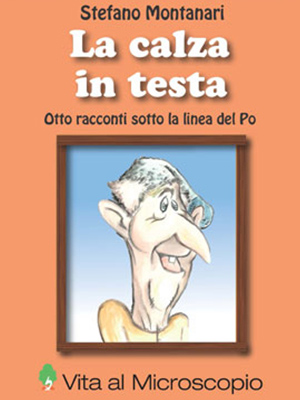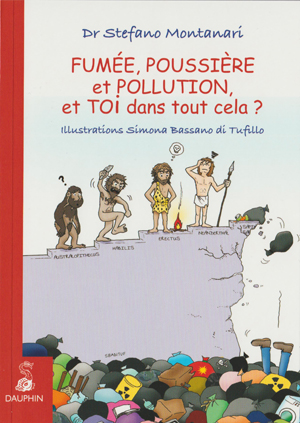P.S. Per chi legge l’inglese, ho aggiunto in calce la prefazione al libro della dott.ssa Ottilia Saxl, fondatrice dell’Institute of Nanotechnology.
Dopo una lunga gestazione è uscito il libro di mia moglie e mio Case Studies in Nanotoxicology and Particle Toxicology pubblicato da Elsevier.
Nel 2008 uscì il
nostro Nanopathogy The Health Impact of Nanoparticles pubblicato da Pan Stanford, un libro la cui lettura credo di poter reputare opportuna prima di addentrarsi nel nuovo testo a più di un professore nostrano e, comunque, a tutti gli addetti ai lavori che non intendono restare decenni in arretrato.
Oggi, a non pochi anni di distanza dalle nostre scoperte, occupano di tanto in tanto la ribalta università, e non solo italiane, che, con grande clamore, scoprono ciò che ormai è la nostra acqua calda. Se oggi, con il tipo d’informazione di cui il mondo è vittima, queste scenette vengono prese sul serio, potrebbe non essere così tra qualche anno quando la miriade d’interessi meschini che distorcono la scienza e, in fondo, la società, avranno poco o, auspicabilmente, nessun valore, qualcuno potrebbe andare a rovistare fra libri e articoli passati per scoprire che c’è chi si è vestito delle penne del pavone senza averne alcuna legittimità. Giusto per informazione, nel frattempo noi abbiamo pubblicato parecchio materiale compresi capitoli su libri altrui, e anche quelle letture non farebbero male a chi non si accontenta di Internet.
Una delle cose che trovo più buffe è vedere come si organizzino riunioni, convegni e corsi in cui si parla di patologie da nanoparticelle e i docenti sono personaggi che non hanno mai dato il minimo contributo alla ricerca. Anzi, accade pure che qualcuno di loro abbia attaccato mia moglie e me anni fa sostenendo ciò che oggi va ad insegnare.
Il libro del 2008 è reperibile presso tutte le biblioteche delle dieci maggiori università del mondo. Nessuna meraviglia se nelle nostre accademie non si trova. Vedremo che cosa accadrà con il nuovo nato.
FOREWORD
Drs. Gatti and Montanari are members of that rare species, scientists whose
work is so novel and far-reaching that society is reluctant to believe it in
the first instance. However, with time, the ideas and notions put forward
make so much sense, they move into the realm of accepted wisdom.
The work of these particular authors relates to the origins of hitherto
inexplicable but widespread diseases of the modern industrialised world.
Evolution has fitted humans to be “at one” with their environment.
Disease often occurs when that environment is affected in unnatural ways;
for example, the flu pandemic of 1919 was traced back to an abnormal
proximity of people and animals, as are present outbreaks of bird flu, and
many previous and subsequent plagues can be related to overcrowding
and poor sanitation in towns and cities, unnatural situations which humankind
was not evolved to cope with.
There is now a crop of new diseases that are besetting society. These
diseases and their causes are the focus of this book. Many of these diseases –
and their causes – are extremely controversial. Society will often deny what
it does not want to admit. But Gatti and Montanari have applied their expertise,
experience and professional rigor to uncovering the “key” to this
multitude of modern afflictions. And like every new theory, the more it
appears to provide the solution to each new problem, the more acceptable
it becomes. And the sooner we accept what the authors are telling us, the
sooner we can restrict or ban altogether the root causes. Though what they
say makes for very uncomfortable reading.
So, what are these modern diseases? And what are their causes? The diseases,
outlined in graphically riveting detail, range from clinical cancers such
as mesothelioma and leukemia, to Gulf War syndrome and similar diseases,
to diseases associated with proximity to certain industrial plants to workplace
diseases; for example, those manifest by some hairdressers, welders,
ceramic-tile workers and so on.
The authors have made a lifetime’s study of many diseases whose
causes have baffled other scientists, and their conclusions for m the basis
for this book. This publication is not a dry academic treatise; it is an
earth-shattering story, written in the finest traditions of detective work,
based on uncovering the facts, and then identifying the culprit.
Forscientists and laypeople alike, this book is a fascinating read, not only
because it shows science at its best, but also because it communicates its
message clearly, and having health as its theme, it touches the fears and
hopes of each and every one of us.
The critical key to understanding the root cause of these “modern” diseases,
according to Gatti and Montanari, revolves around the unrecognized
exposure to man-made nanoparticles and their subsequent introduction into
the body, resulting in damage to surrounding cells, tissues and organs. These
novel particles are generally metallic, usually the result of high-temperature
combustion, and are often completely new compounds.
It is likely this book will engender a great rage that innocent and
unknowing individuals in the past have fallen mortally ill from causes that
can be traced to industrial and military activity. My wish is that now there
will be no excuse for any individual in the future to suffer a similar fate.
And no hiding place for governments that do not implement the necessary
legislation to stop these preventable diseases in their tracks.
Ottilia Saxl
Founder, Institute of Nanotechnology and Nano Magazine



















Well done!Elsevier dovrebbe essere una garanzia per quanto riguarda lo standard delle pubblicazioni scientifiche (almeno per cio’ che concerne la mia conoscenza). Complimenti per il risultato.Anche i vostri detrattori non credo potranno piu’ ignorarvi. RISPOSTA Purtroppo noi non siamo mai stati ignorati, e questo ci ha portato guai a non finire. Le istituzioni pullulano di nullità che si danno arie da grandi scienziati quando, ahimè, non si tratta d’altro che, appunto, di nullità. Non pochi tra costoro vivono, a volte nemmeno male, di espedienti, e le nostre scoperte non potevano altro che dar loro molta noia. Così, come si fa… Leggi il resto »